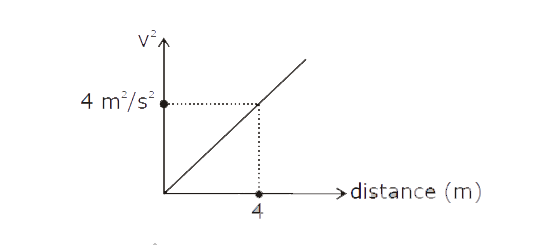If a point is moving in a line so that its velocity at time t is proportional to the square of the distance covered, then its acceleration at time t varies as
cube of the distance
the distance
square of the distance
none of these
The correct Answer is:A
Step by step video, text & image solution for If a point is moving in a line so that its velocity at time t is proportional to the square of the distance covered, then its acceleration at time t varies as by Maths experts to help you in doubts & scoring excellent marks in Class 12 exams.
Updated on:21/07/2023Topper's Solved these Questions
- DERIVATIVE AS A RATE MEASURER BOOK - OBJECTIVE RD SHARMACHAPTER - DERIVATIVE AS A RATE MEASURER EXERCISE - Section I - Solved Mcqs
27 Videos
- DEFINITE INTEGRALSBOOK - OBJECTIVE RD SHARMACHAPTER - DEFINITE INTEGRALSEXERCISE - Chapter Test 2
60 Videos
- DIFFERENTIAL EQUATIONSBOOK - OBJECTIVE RD SHARMACHAPTER - DIFFERENTIAL EQUATIONSEXERCISE - Chapter Test
30 Videos
Similar Questions
Knowledge Check
If a particle is moving such that the velocity acquired is proportional to the square root of the distance covered, then its acceleration is
Aa constantB∝s2C∝1s2D∝sIf the distance s covered by a particle in time t is proportional to the cube root of its velocity, then the acceleration is
Aa constantB∝s3C∝1s3D∝s5The distance covered by a moving body is directly proportional to the square to the time. The acceleration of the body is
AincreasingBdecreasingCzeroDconstant
In a straight line motion the distance travelled is proportional to the square root of the time taken The acceleration of the particle is proportional to :-
View SolutionIf a particle moves along a line by S=√1+t then its acceleration is proportional to
View SolutionA body travels such that square of time is proportional to the displacement. Its acceleration is:
View SolutionA particle is moving on a straight line. Its velocity at time t is (8−2t)m/s. What is the total distance covered from t=0 to t=6s?
View SolutionA particle is moving on a straight line such that square of its velocity is directly proportional to distance as shown in graph. What is the acceleration of the particle ?

View Solution
